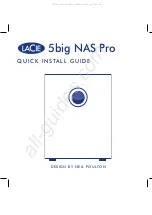
CUoD
activation
features
will
not
be
fulfilled
until
you
submit
the
VPD
through
the
Electronic
Service
Agent
or
manually
to
http://www.ibm.com/servers/eserver/pseries/cuod/index.html.
When
you
enter
a
CUoD
activation
code,
standby
processors
or
memory
will
immediately
become
activated
for
use.
If
your
operating
system
is
enabled
for
dynamic
logical
partitioning
operations,
the
resource
status
changes
from
standby
to
active.
The
resources
then
can
be
dynamically
moved
to
the
partition
where
they
are
needed.
If
a
CUoD
activation
feature
is
ordered
and
then
canceled,
an
action
by
the
service
representative
is
required
to
cancel
the
order.
After
the
activation
code
is
posted
on
the
Web
or
mailed,
the
order
for
CUoD
activation
features
is
considered
fulfilled,
and
the
billing
process
is
started.
Electronic
Service
Agent
and
Capacity
Upgrade
on
Demand
When
Electronic
Service
Agent
is
used
to
electronically
report
VPD
on
a
regular
basis,
you
can
eliminate
potential
delays
in
the
order
process
for
CUoD
activation
features
(no
manual
reporting
of
VPD
is
necessary
prior
to
the
fulfillment
of
a
feature
upgrade
order).
To
optimize
Electronic
Service
Agent
and
to
be
prepared
to
activate
CUoD
features
conveniently,
make
sure
that
Electronic
Service
Agent
and
related
communications
equipment
are
up
and
running.
If
this
is
done
before
the
CUoD
activation
features
are
ordered,
the
VPD
for
the
system
will
already
be
up
to
date,
and
the
manual
process
of
updating
the
VPD
is
not
needed.
After
Electronic
Service
Agent
is
installed,
follow
the
procedures
under
to
enable
the
system
to
collect
and
transfer
the
required
VPD
for
CUoD.
Dynamic
Processor
Sparing
In
environments
with
CUoD,
dynamic
processor
sparing
allows
inactive
processors
to
act
as
dynamic
spares
.
An
inactive
processor
is
activated
if
a
failing
processor
reaches
a
predetermined
error
threshold,
thus
helping
to
maintain
performance
and
improve
system
availability.
Starting
with
AIX
5.2,
this
capability
is
offered
on
pSeries
servers
with
CUoD
to
help
minimize
the
impact
to
server
performance
caused
by
a
failed
processor.
Dynamic
sparing
will
happen
dynamically
and
automatically
when
using
dynamic
logical
partitioning
(DLPAR)
and
the
failing
processor
is
detected
prior
to
failure.
If
not
detected
prior
to
failure
or
not
using
DLPAR,
a
reboot
of
the
system
activates
an
alternate
processor
from
the
inactive
spares.
The
user
can
then
re-establish
required
performance
levels
without
waiting
for
parts
to
arrive
on-site.
Dynamic
processor
sparing
does
not
require
the
purchase
of
an
activation
code;
it
requires
only
that
the
system
have
inactive
CUoD
processors
available.
Software
Licenses
and
Processor
CUoD
Activating
a
processor
may
change
the
terms
and
conditions
for
applications
that
you
use
on
your
server.
To
determine
if
the
license
terms
and
conditions
requirements
change
based
on
hardware
configuration,
consult
the
application
documentation.
12
Eserver
pSeries
690
Service
Guide
Summary of Contents for eserver pSeries 690
Page 1: ...pSeries 690 Service Guide SA38 0589 05 ERserver...
Page 2: ......
Page 3: ...pSeries 690 Service Guide SA38 0589 05 ERserver...
Page 12: ...x Eserver pSeries 690 Service Guide...
Page 14: ...xii Eserver pSeries 690 Service Guide...
Page 228: ...Step 1527 5 Call your next level of support 212 Eserver pSeries 690 Service Guide...
Page 362: ...Step 1545 15 Call for support This ends the procedure 346 Eserver pSeries 690 Service Guide...
Page 381: ...Step 154A 14 Turn off the power Chapter 3 Maintenance Analysis Procedures 365...
Page 430: ...414 Eserver pSeries 690 Service Guide...
Page 798: ...782 Eserver pSeries 690 Service Guide...
Page 923: ...L3 Cache Shorts Test Step 4 Chapter 9 Removal and Replacement Procedures 907...
Page 924: ...L3 Cache Shorts Test Step 5 908 Eserver pSeries 690 Service Guide...
Page 926: ...L3 Cache Shorts Test Step 2 910 Eserver pSeries 690 Service Guide...
Page 928: ...L3 Cache Shorts Test Step 4 912 Eserver pSeries 690 Service Guide...
Page 929: ...L3 Cache Shorts Test Step 5 Chapter 9 Removal and Replacement Procedures 913...
Page 1055: ...7040 Model 681 Media Subsystem 1 2 3 4 5 6 7 8 9 10 Chapter 10 Parts Information 1039...
Page 1057: ...Power and SCSI Cables to the Media Subsystem 1 2 3 5 4 6 Chapter 10 Parts Information 1041...
Page 1061: ...Power Cabling Chapter 10 Parts Information 1045...
Page 1090: ...1074 Eserver pSeries 690 Service Guide...
Page 1094: ...1078 Eserver pSeries 690 Service Guide...
Page 1122: ...1106 Eserver pSeries 690 Service Guide...
Page 1124: ...1108 Eserver pSeries 690 Service Guide...
Page 1132: ...1116 Eserver pSeries 690 Service Guide...
Page 1133: ......
Page 1134: ...Printed in U S A February 2004 SA38 0589 05...
















































